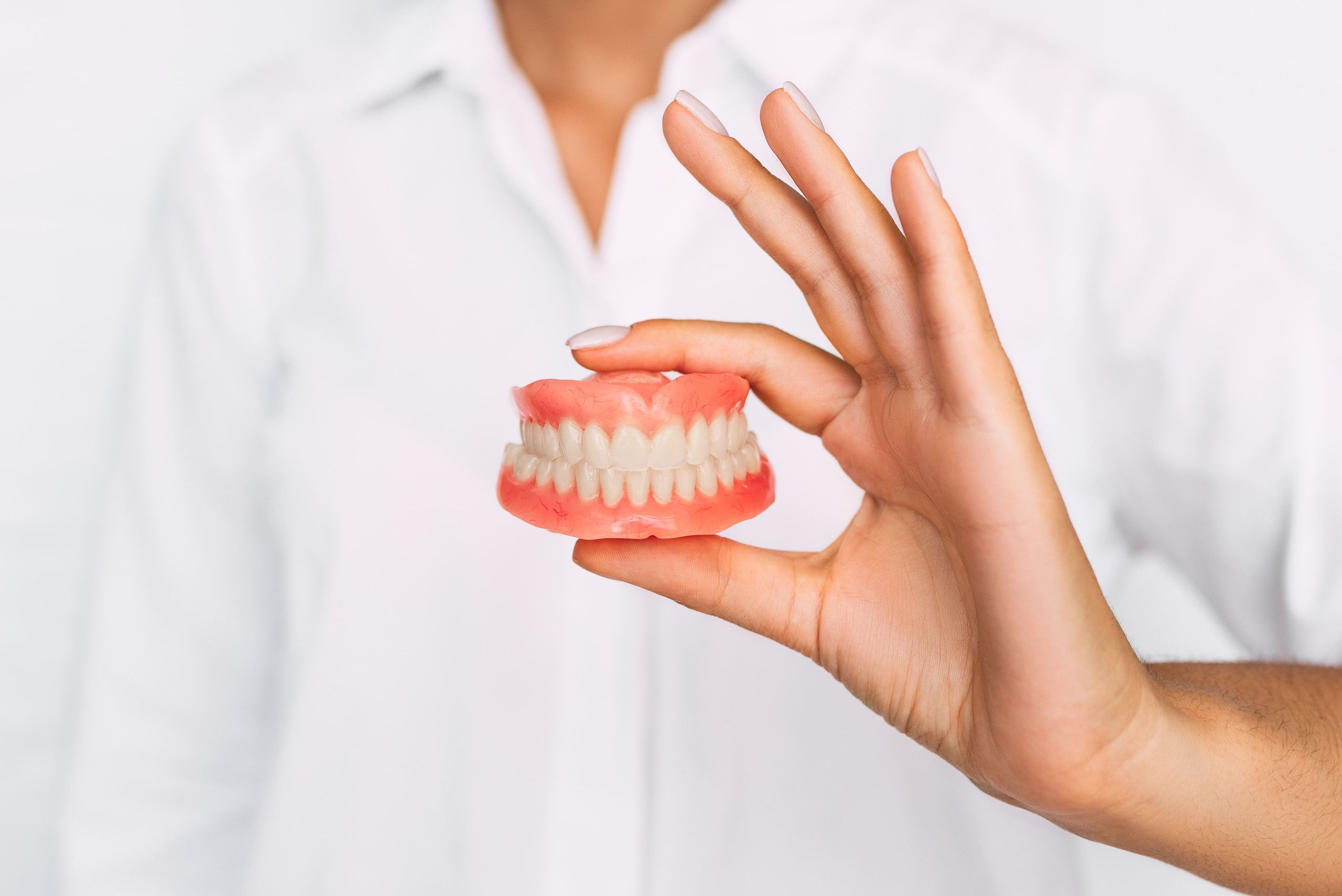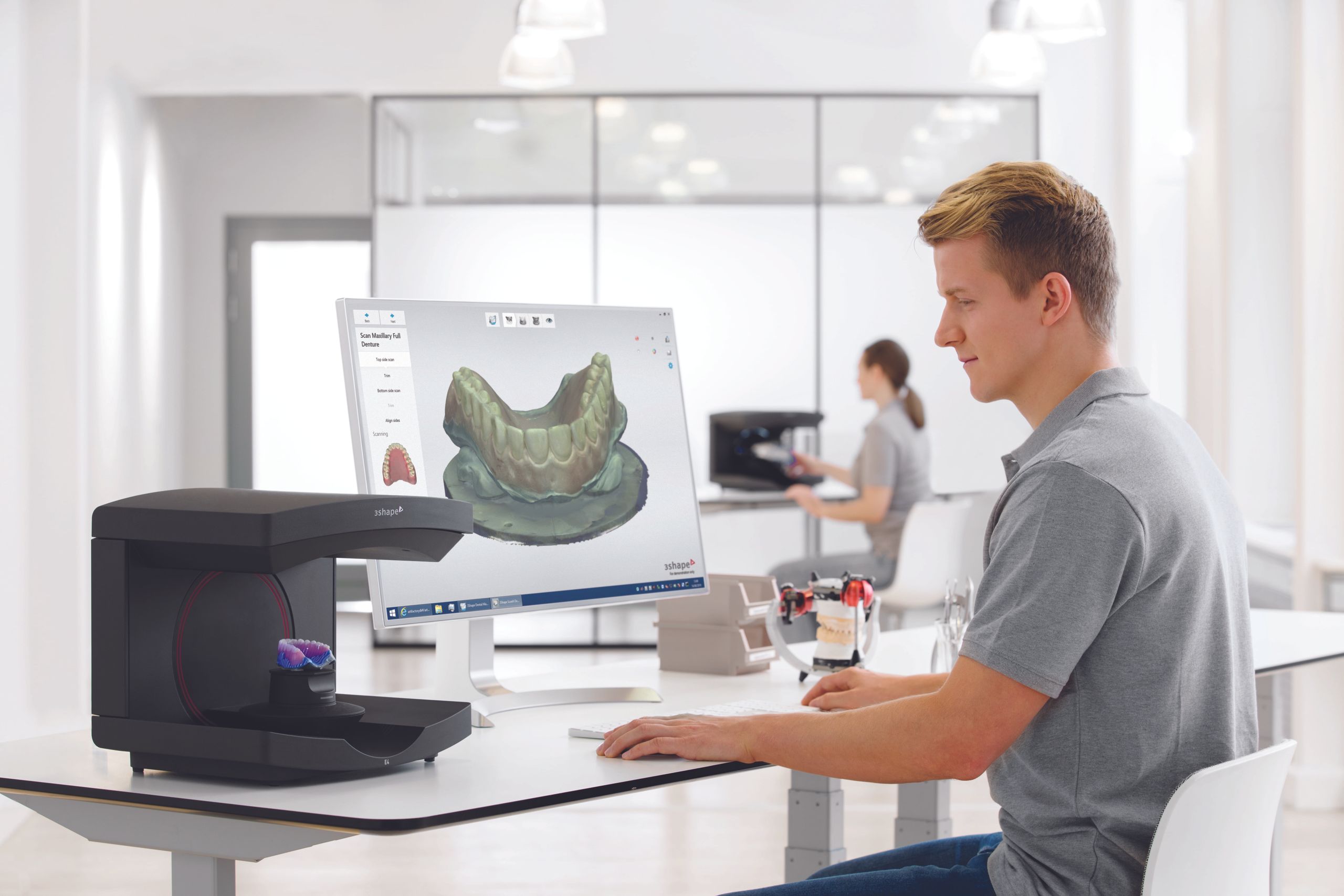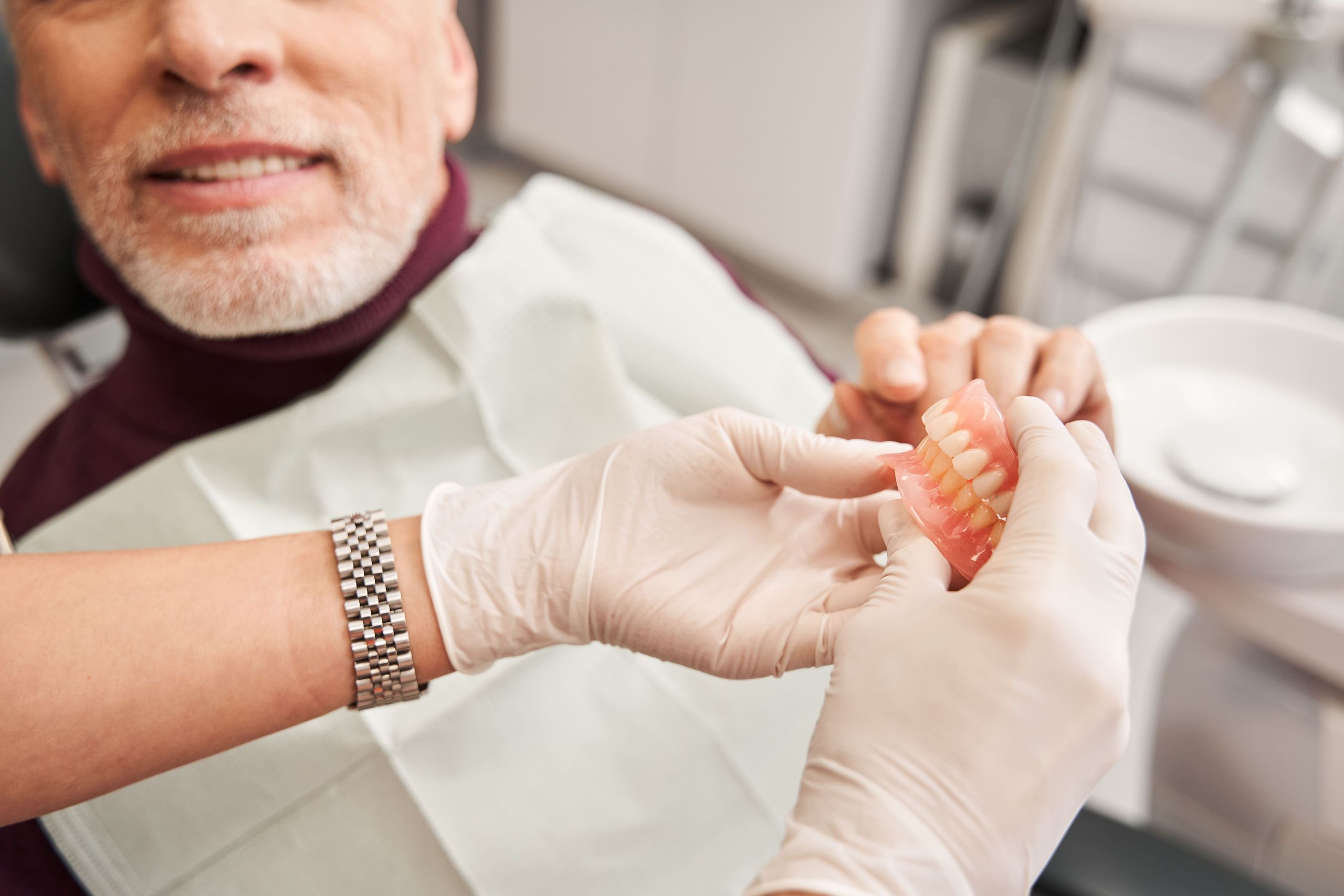- Home
- Blog
- Digital dentistry
- Digital Dentures
Digital dentures: fabrication, workflow and benefits
What are digital dentures?
Digital dentures are dental prostheses created with the help of scanners, design software and mills or printers. These digital tools can provide for more accuracy, efficiency and often more comfort for the patient.
The digital denture workflow can start in different ways: sometimes a conventional impression is still needed, sometimes a direct scan in the patient’s mouth can be done to create a digital impression for dentures, and sometimes an impression isn't needed because the clinician does a duplicate of an existing denture. The way the workflow looks depends entirely on the clinical situation and the type of denture that is created.
Intraoral scanning technology can replace the part of the workflow where patients were asked to sit with an uncomfortable impression tray in their mouth for long stretches of time. In addition, digital technology can take out some manual steps that used to be time consuming: time needed for resets due to inaccuracies in for example occlusion, vertical dimension, and/or aesthetics. If, for example, the patient’s midlines are skewed, the clinician would have to remove all teeth (as many as 28), re-wax, re-set each tooth individually, redo the wax confinement and then invest, process trim and polish.
With the advent of digital dental scanning technology, it became possible to do digital imaging for dentures in a few minutes with maximum comfort for the patient. In the design phase of the workflow, corrections that could previously take hours, are now done in ten to fifteen minutes. In addition, in the case of a digital removable prosthesis, the uniformity of the design is very beneficial. With the right software, the dental specialist can provide the clinic with cost-effective 3D printed dentures within a day, which reduces the duration of the treatment, number of visits needed, and time spent working with the patient. Challenging cases can even be tested with designs that are then digitally archived and can easily be referenced or duplicated. A 3D printed treatment is therefore a very cost-efficient solution.

How are digital dentures made?
As mentioned, digital denture design either starts with an existing prosthesis, or with a conventional or digital impression. For a direct mouth scan, the clinician uses a dental intraoral scanner, which outputs a 3D file of the oral cavity that is then used for designing, for example the try-in denture. If a direct impression isn't possible, the dental specialist will create a conventional impression. A combination of different imaging and impression taking methods is also possible 1. Hassan B, Greven M, Wismeijer D. Integrating 3D facial scanning in a digital workflow to CAD/CAM design and fabricate complete dentures for immediate total mouth rehabilitation. J Adv Prosthodont. 2017 Oct;9(5):381-386. doi: 10.4047/jap.2017.9.5.381. Epub 2017 Oct 16. PMID: 29142646; PMCID: PMC5673615..
Regardless of the imaging and impression taking method, digital dentures are designed with the help of digital denture software to ensure that the end product is fitting well and restores function, esthetics and phonetics for the patient. Software used for design and production is also referred to as computer-aided design and manufacturing technology (or CAD/CAM, in short).
Digital denture fabrication can be done in different ways. With a digital file as a starting point, 3D printing is an option, especially when cost is a factor1. Lucio Lo Russo, DDS, PhD, Khrystyna Zhurakivska, DDS, PhD, Laura Guida, DDS, Konstantinos Chochlidakis, DDS, MS, Giuseppe Troiano, DDS, PhD, Carlo Ercoli, DDS, MBA. Comparative cost-analysis for removable complete dentures fabricated with conventional, partial, and complete digital workflows. May 31, 2022.. However, many dental specialists prefer milling the denture, or using a combination of 3D printing and milling, because the materials are well known and studied, and the outcome is seen as more predictable and durable.

How does the digital denture workflow look?
For the creation of digital dentures, dental clinics, denturists and dental laboratories have to work together, unless the entire process is handled in-house by one specialist. Since not all clinics and labs have implemented digital technologies into their practice, the collaboration process may differ. Also, each denture is different: a duplicate from an existing denture is different from an immediate denture, just as much as a partial removable denture is different from a try-in denture. At a general level, we can say that a digital denture workflow includes the following steps:
- The impression. Digital dentures cannot be created out of thin air: the clinician needs a 3D representation of the current situation. This is done by scanning or taking an analog impression. The process of taking digital scans for dentures may differ depending on the case: is the patient fully edentulous, or not? Is it the first time or are we creating a duplicate denture? When the data is captured, either with an intraoral or a dental model scanner, the clinic decides if they keep the case in-house or if it is handed over to a specialist (a denturist or lab). Along with the file, the clinic will usually be able to send comments, additional files such as pictures, etc. along in the communication software.
- The digital denture design. The dental technician will load the files into digital prosthetics software, which allows for dental technicians to create personalized prostheses with a perfect fit. Whether it's for full or partial digital removable dentures, the software can help automate much of the denture design process: from model analysis to gingiva placement. In addition, CAD software can fully eliminate the need for analog re-sets. Digital design hence doesn’t only save design and treatment time, but also material costs.
- When the partial or full denture design is ready, it’s time for production. This can either be done by milling or by 3D printing of dentures or a combination of the two. Usually, 3D-printed dentures are made from light curing resins, whereas milling uses traditionally tried and tested materials. In the scenario of 3D printing of complete or partial dentures, the denture base and the denture teeth are manufactured separately. After the digital denture printing, teeth are attached to the base and go through the final curing process.
- The next stage of the digital denture workflow is optional and is called “characterization”. It is done in order to make the prostheses look and feel more lifelike and natural — by emulating the patient’s natural features with composites.
- Once the dentures are produced, there is a final manual step. The denture goes for a two-stage polishing to smooth any possible roughness on the outer surfaces and make it easier to maintain hygiene.

The removable prostheses can be manufactured directly as the definitive version. Alternatively, a try-in version can be produced which allows the clinician to test the fit and function on the patient and make sure that they look natural and feel comfortable before the final prosthesis is made. A try-in stage also makes collaboration between a dental laboratory and a dentist more efficient and predictable. If the clinician and the patient accept the denture design, the definitive treatment is a safe next step.
Are digital dentures better than conventional?
The difference between digital and conventional dentures is not only in the use of hardware and software to digitize parts of the workflow. Much of it also lies in a craft with a long tradition and that comes with its own heritage. Some craftspeople will prefer conventionally tested and tried methods, whereas other clinicians see benefit in digital accuracy and speed, and how this also benefits their patient.
What we can conclude based on clinical research though, is that the majority out of 522 studies reported that digital complete dentures showed similar or better adaptation than conventional dentures 3. Wang C, Shi YF, Xie PJ, Wu JH. Accuracy of digital complete dentures: A systematic review of in vitro studies. J Prosthet Dent. 2021 Feb;125(2):249-256. doi: 10.1016/j.prosdent.2020.01.004. Epub 2020 Feb 27. PMID: 32115218.. Other clinical studies also showed that digital workflows for dentures reduced chair time and number of visits for a patient, and ensured ‘more favorable clinical and patient-centered outcomes’ 4. Janeva NM, Kovacevska G, Elencevski S, Panchevska S, Mijoska A, Lazarevska B. Advantages of CAD/CAM versus Conventional Complete Dentures — A Review. Open Access Maced J Med Sci. 2018 Aug 4;6(8):1498-1502. doi: 10.3889/oamjms.2018.308. PMID: 30159084; PMCID: PMC6108805..
When it comes to the patient’s perspective on digital versus conventional ways of treatment planning in dentistry, they might not have a clear preference yet. Patients do not always know about the existence of digital technologies available, and how it can influence their denture treatment process. But when they do know, they might ask their dentist for digital dentures because it can bring them the following benefits:
- More comfort and better fit — digital dentures benefit from digital scanning accuracy, which enables technicians to create dentures with better fit and retention.
- Faster fabrication speed and fewer dental visits — creating digital prostheses can be done faster than traditional ones. This also results in savings on the number of visits and adjustments needed.
- Digital prostheses are up to 8 times stronger than conventional 5. Jason Mazda. Digital Dentures Are Here. Proponents say digitizing a traditionally challenging process is no longer a novelty. Inside Dental Technology. 2018 February. — especially when they are milled and made from robust milling materials such as MMA or PMMA.
- Esthetics — when the denture design software works with official teeth libraries, the patient gets infinite options to create their perfect smile. The denture can be made truly lifelike with natural morphology, color, structure and reflection.
- When lost or damaged, digital complete dentures can easily be duplicated. A dentist will simply ask the lab to find them in the electronic database and get them re-produced.
Dive deeper in the world of digital dentures
Step by step digital reference denture workflow
If you are a practitioner yourself and want to learn how to create digital dentures using the reference denture protocol, then this free ebook is for you. Experienced denturist Erik Kukucka has laid out exactly how he does it.